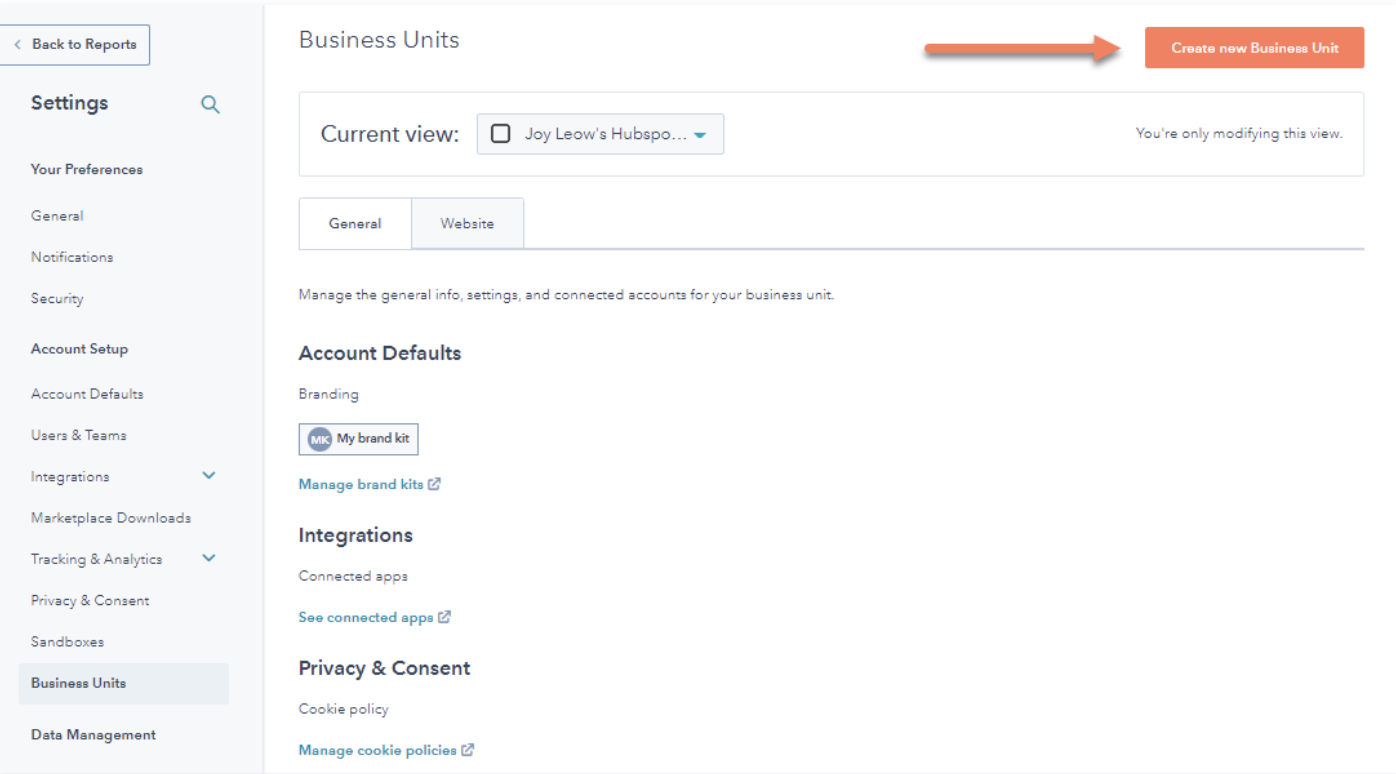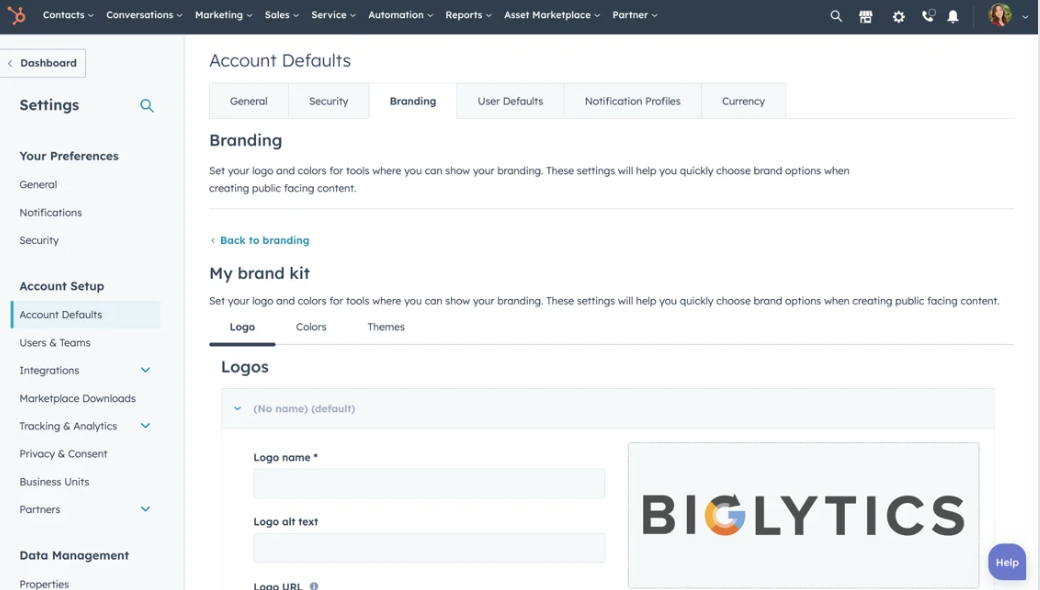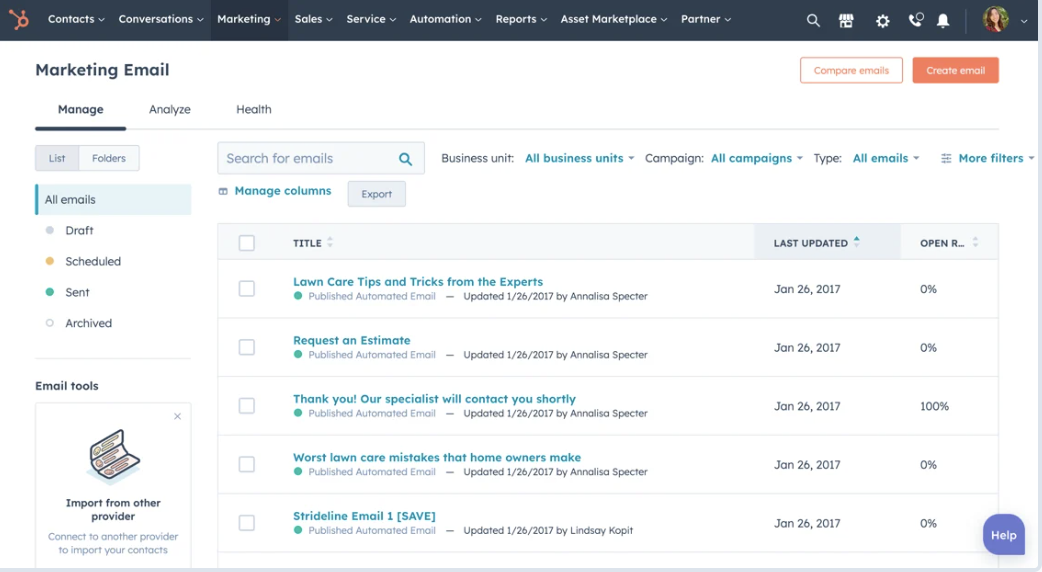In this article, we’ll explore how HubSpot business unit tools can be leveraged to streamline operations, enhance brand coherence, and drive organisational efficiency.
One of the powerful features offered by HubSpot is the strategic use of the business units tool for effective brand management. Within HubSpot, "business units" serve as a crucial add-on feature, empowering businesses to manage multiple brands seamlessly within a shared HubSpot portal - that would have been required before the introduction of the tool.
From a technical standpoint, business units provide a structured framework for delineating different entities within a single HubSpot account, offering a centralised yet customisable approach to brand management.
In the following sections, we will explore real-world use cases to illustrate the practical application of business units in solving these challenges and demonstrate their transformative role in multi-brand management.
What are HubSpot business units?

HubSpot business units provide a seamless way for organisations to manage the complexity of managing multiple brands. Business units are a powerful add-on strategically designed to support organisations within a shared HubSpot portal.
From a technical perspective, business units provide a structured framework similar to a digital command centre, allowing companies to efficiently organise and manage a diverse family of brands across different tools. With HubSpot’s Business Units, Organisations can effectively create, manage and measure the performance of each brand as an independent entity while working seamlessly within a unified HubSpot environment.
Companies are no longer limited to a one-size-fits-all approach but can tailor their strategies to the exact needs of each brand by allocating resources, authorisations and workflows accordingly. In essence, HubSpot business units are redefining the approach to brand management within marketing automation, providing a dynamic and scalable solution for organisations
Let's take a look at the technical intricacies and additional features that make HubSpot Business Units a cornerstone of effective brand management.
Technical nuances of HubSpot business units
HubSpot business units form an organisational layer within the HubSpot ecosystem. They go beyond traditional segmentation by providing a centralised yet customisable framework that allows companies to create and manage multiple brands seamlessly within a common HubSpot portal.
The technical capabilities of business units lie in their ability to act as a hub for different tools and provide companies with a holistic environment to orchestrate marketing, sales and CRM activities for each individual brand. This goes beyond a superficial organisational structure and provides a dynamic solution for companies that need to manage the complexity of a multi-brand landscape.
Add-on features enhancing brand management
As businesses embrace HubSpot business units, they gain access to a spectrum of add-on features that elevate brand management to new heights.
These features include:
- Custom branded experiences: Business units enable businesses to create unique and tailored experiences for each brand. This customisation extends to campaigns, workflows, and communication strategies, ensuring that the essence of each brand is preserved and amplified.
- Efficient performance reporting: The integrated approach of business units allows businesses to streamline performance reporting at both the parent company and individual brand levels. This not only provides a comprehensive overview but also facilitates targeted analysis, empowering businesses to make data-driven decisions for each brand.
- Unified command centre: With business units, businesses have a unified command centre for cross-brand campaigns, upsell initiatives, and audience segmentation. This centralised approach enhances efficiency, enabling businesses to navigate and manage multiple brands with agility.
In essence, the technical and add-on features of HubSpot business units redefine brand management. They provide businesses with a nuanced approach, allowing them to not only manage but flourish in a multi-brand ecosystem.
In the upcoming section, we'll delve into the specific pain points addressed by HubSpot business units for organisations.
When to use HubSpot business units:
For companies looking to optimise their brand management strategies, it is crucial to identify the right time to deploy HubSpot business units.
Let’s look at common scenarios where the introduction of business units proves helpful in overcoming challenges and providing tailored solutions to increase organisational efficiency.
Managing multiple brands under one umbrella

One of the primary scenarios where HubSpot business units shine is when a company operates multiple brands under one overarching entity.
Traditional organisational structures often struggle to accommodate the diversity inherent in managing distinct brands. Business units provide a remedy, offering a centralised hub where each brand maintains its autonomy, allowing businesses to navigate and nurture their brand portfolio efficiently.
Distinct permissions and email subscription preferences
In the complicated web of multi-brand management, it is a common challenge to ensure that each brand has different permissions and customised email subscription settings.
HubSpot business units provide a solution by allowing organisations to set up separate permissions and settings for each brand.
This granular control ensures that the right people have access to specific brands, streamlining workflows and maintaining brand integrity.
Enhancing organisational structure and efficiency

The need for a coherent yet flexible organisational structure is paramount as the brand portfolio grows.
Business units serve as a catalyst for improving organisational structure, providing a framework that adapts to the unique requirements of each brand. This adaptability leads to greater efficiency as teams can collaborate seamlessly in a shared HubSpot portal, focusing on the specific needs of their assigned brand.
By strategically implementing HubSpot business units, organisations can overcome these challenges and turn them into growth opportunities. The differentiated business unit solutions enable companies to streamline operations, overcome organisational bottlenecks and create a dynamic environment that promotes the sustainable success of each brand.
In the following sections, we will explore real-world use cases to illustrate the practical application of business units in solving these challenges and demonstrate their transformative role in multi-brand management.
Limitations to HubSpot’s business units
While HubSpot's business units offer a powerful solution for multi-brand management, it's essential to acknowledge that, like any tool, they come with certain limitations. Recognising and addressing these limitations is crucial for organisations aiming to make the most out of their brand management strategies.
Let's delve into some common challenges faced by users and explore how Huble can provide solutions to enhance the overall experience.
- Asset mobility challenges
In real-world scenarios, businesses often encounter issues related to the movement of assets between different business units. For instance, when working with a large market research company, we faced a significant challenge when attempting to transfer assets from one business unit to another. Unfortunately, the process wasn't as seamless as anticipated, leading us to recreate all assets manually and make necessary adjustments. This limitation in asset mobility can be a hurdle for organisations seeking efficient ways to manage their resources across various brands.
- Re-subscription email confusion
Another notable limitation involves the handling of re-subscription emails sent to users who opt out and then submit a new form. In certain instances, there's only one unified email, and it may contain details from the mother company rather than the specific brand to which the user is subscribing. This discrepancy can raise concerns among business unit members and, more importantly, lead to confusion among customers. Imagine a scenario where a user subscribes to company "B" but receives emails from company "A"- a situation that can potentially erode brand trust and create unnecessary complexities.
While HubSpot's business units are a powerful tool for multi-brand management, it's essential to be aware of their limitations. By working with solutions providers like Huble to fully leverage HubSpot’s business units, organisations can optimise their brand management strategies, overcome challenges, and ensure a seamless experience for both internal teams and end-users.
Conclusion
HubSpot business units are not just a feature within HubSpot, but a powerful add-on strategically designed to support organisations within a shared HubSpot portal.
From their technical intricacies to their seamless integration with additional functions such as domains, business units enable organisations to manage the complexity of multi-brand landscapes with unprecedented efficiency.
Use the power of HubSpot business units to unlock new opportunities and take your brand to new heights. Contact our team today to find out more.














